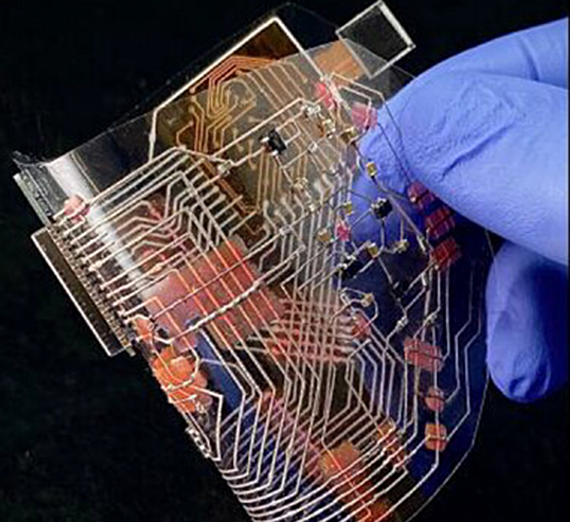New Biomedical Engineering Professor Publishes on Human-Interfaced Electronics


Nathan Zavanelli, Ph.D. began his appointment as assistant professor in biomedical engineering at the start of summer, and he immediately got to work finalizing three key studies from his post-doctoral research at Carnegie Mellon. Each of these publications plays a role in advancing the capabilities of wearable electronics for healthcare applications.
Dr. Zavanelli’s new smart bioelectronics lab at Gonzaga University is building on this research with undergraduate students. “There are several very interesting opportunities right now for Gonzaga undergraduates to contribute to this work and make a meaningful difference in patient’s lives," he says. "I am very pleased with the progress my current research team is making, and I am excited to see how much they can accomplish.”
Biomedical engineering equips students with an interdisciplinary and multifaceted skillset from mechanical engineering, electrical engineering and health sciences in preparation for a variety of health-related disciplines.
3d Printing Flexible and Wearable Circuits to Augment Human Sensing

Dr. Zavanelli is the primary author of an article demonstrating a new method for printing flexible or stretchable wearable patches in minutes. The new nanomaterial ink he developed is instantly conductive, self-healing, and can be used to print complex multilayer circuits on curved surfaces.
He demonstrated the ability to fully print highly functional circuits, including a wearable patch integrated with a camera that live-streams a video feed to a user’s AR headset.
“Augmenting human sensing with wearable electronics has the potential to revolutionize how we interact with the environment, enabling 'superhuman' abilities to incorporate new data streams into the daily experience,” Zavanelli writes.
”Intrinsically Soft Printed Electronics for Digitally Augmented Human Sensing and Vision” appears in Advanced Functional Materials.
Improved Touch Sensation for Virtual Reality

Dr. Zavanelli’s second article is a groundbreaking study in Nature Electronics, the most prestigious journal in the broad field of electrical engineering. As the second author, he helped develop a haptic device worn on the finger that can produce 11 distinct and nuanced touch sensations.
"Teleoperated surgery (where a surgeon controls a robotic device in a distant location) could revolutionize access to advanced procedures, but it turns out that the surgeon’s sense of touch is crucial to their ability to perform a procedure. This new device is a great first step in providing the type of high precision touch sensations they would need to perform teleoperated surgeries," he says.
”A flexible skin-mounted haptic interface for multimodal cutaneous feedback” appears in Nature Electronics.
New ECG Electrodes Maintain Adhesion in Difficult Work Scenarios

Another paper recently published describes a soft, flexible electrode that sticks to skin like a gecko’s foot. It captures bio-signals just as well as clinical-grade sensors, even when skin is dirty or dusty. This feature, plus the fact that it’s reusable, comfortable, and reliable, makes this type of electrode perfect for future health wearables and on-the-go monitoring.
”Bio-inspired soft electrodes for robust and reusable bioelectronic stickers” appears in IOP Science.
